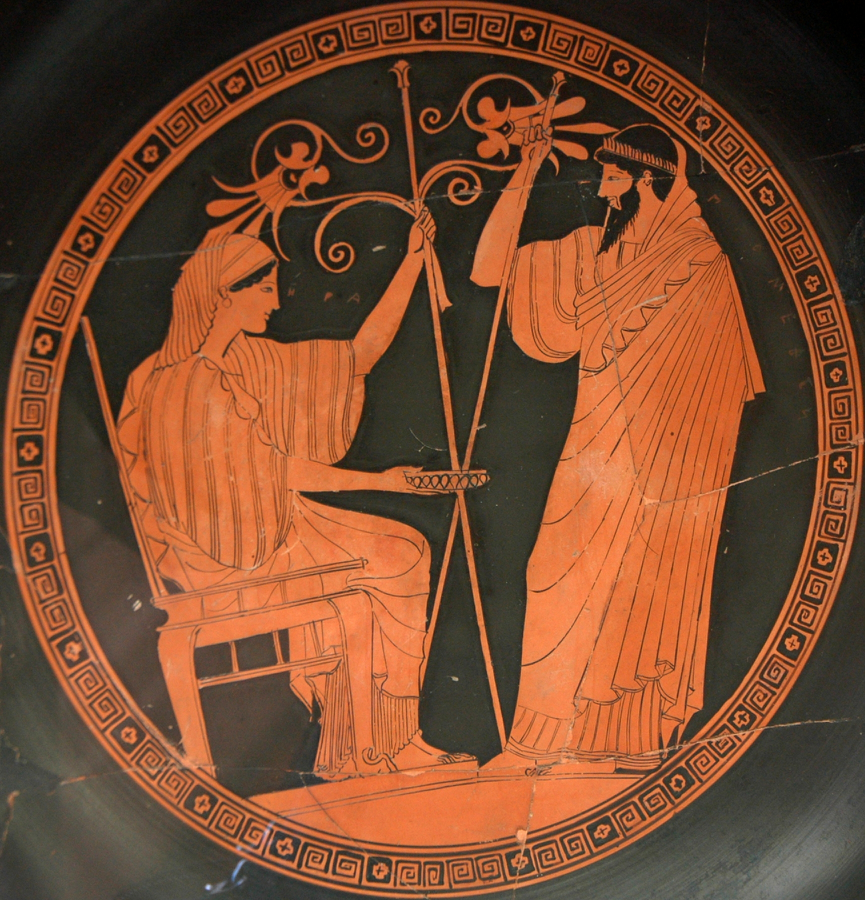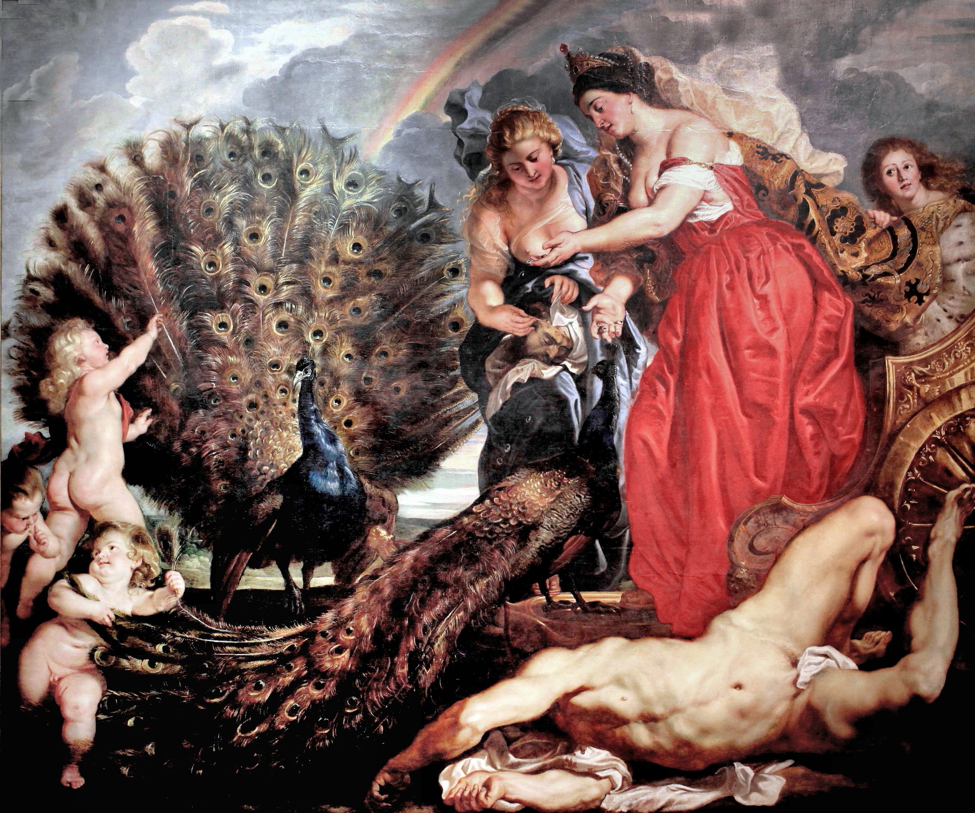Hera
Roman name: Juno
Epithets: Cow-eyed, Eileithyia
Symbols: cow, peacock, scepter
Functions: goddess of marriage and consort to Zeus
The Birth of Hera
Hera was a daughter of Cronus and Rhea, and, like her siblings (except Zeus), she was swallowed by her father only to be rescued by her youngest brother, Zeus [see Origins]. She married Zeus and became Queen of the Gods. Together, they had three children: Ares, Hebe (goddess of youth), and Eileithyia (goddess of childbirth). Some versions say that Hephaestus is also her son by Zeus, but more commonly she gave birth to Hephaestus independently because she was angry at Zeus for giving birth to Athena on his own [see Hephaestus]. According to the Homeric Hymn to Apollo, however, Hera actually gave birth to the monster Typhoeus as a way to get back at Zeus for giving birth to Athena.

Hera’s Character
Hera’s character is defined by her wrath. Despite being the goddess of marriage, she was unable to prevent her husband from constantly taking up new lovers. She could not punish him, so she would punish the lovers and the children produced from these affairs. She tried to prevent Leto from giving birth [see Apollo], she tricked Semele into her death [see Dionysus], and she doggedly tortured Heracles throughout his life [see Heracles]. Because Dionysus and Heracles eventually became immortals, Hera had to make peace with them, but it did not come easily [see Dionysus and Heracles]. Zeus once seduced and abducted a girl by the name of Aegina, and he took her to the island of Oenone. Hera threw a snake into the source of water for the entire island, poisoning and killing most of the island to get revenge on one girl. When Zeus fell in love with her priestess, Io, and turned the maiden into a cow, Hera was furious with the girl. After Hermes killed Argus, who was keeping watch over Io [see Hermes], Hera made Io wander the world as a cow until she came to Egypt. She was transformed back into her human form and bore a son. Hera arranged for the child to be kidnapped. With the help of Zeus, mother and child were eventually reunited and settled in Egypt where Io eventually became the Egyptian goddess Isis (this is only what the Greeks believed, the Egyptians had worshiped Isis long before Greek culture began).

The goddess’ wrath was not exclusive to Zeus’ lovers. She helped the Argonauts over the course of their adventure so she could punish Pelias for his impiety. She blinded the seer, Teiresias, because he sided with Zeus in an argument they asked him to solve. She sent the Sphinx to Thebes to punish the king, Laïus, for abducting Chrysippus, the son of Pelops. The Greeks had Hera’s support in the Trojan War because she was still angry over Paris’ decision to award Aphrodite the Apple of Discord [see Intro to Iliad].
Hera’s Origin
Hera most likely originated as a Pre-Hellenic goddess of fertility, which runs into her role as a goddess of all the stages of life for a woman: girl, new bride, and old woman. She is often conflated with her daughter, Eileithyia, as a goddess of childbirth, as is her Roman counterpart, Juno, with the Roman goddess of childbirth, Lucina. Hera had the unique ability to become a virgin again every year by bathing in a spring called the Canathus.

